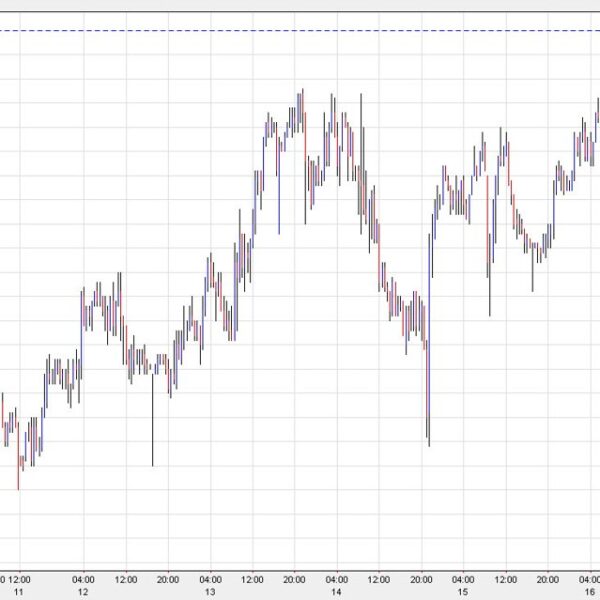The week starts quietly, with U.S. markets closed for Columbus Day and Canada observing Thanksgiving, leading to reduced trading activity.
On Tuesday, the U.K. will release the claimant count change, the average earnings index 3m/y, and the unemployment rate. Later in the day, the highlight will be inflation data from Canada.
On Wednesday, we’ll also see inflation data from New Zealand and the U.K. On Thursday, Australia will report employment change and the unemployment rate, while the eurozone will have the ECB monetary policy announcement. In the U.S., we’ll get unemployment claims, retail sales m/m, and industrial production m/m.
On Friday, the U.K. will release retail sales m/m data, while the U.S. will report building permits and housing starts.
In the U.K., the consensus for the claimant count change is 20.2K vs. the prior 23.7K. For the average earnings index 3m/y, it’s 3.8% vs. the prior 4.0%, while the unemployment rate is expected to remain unchanged at 4.1%.
Overall, expectations for U.K. labor market data suggest some modest weakness, especially in the private sector. The BoE will monitor this data, along with the inflation report on Wednesday, to decide its next steps regarding the path of monetary policy.
So far, economic data from the U.K. has been mixed but generally consistent with the pace of rate cuts. The economy is showing signs of improvement, and inflation is gradually returning to the 2.0% target.
However, the main concern remains services inflation, which is still above 5.0%. Expectations for this week’s data are for headline inflation y/y to be 1.9%, with core inflation likely printing at 3.4%.
Since the labor market appears to be cooling overall, the Bank could accelerate the pace of rate cuts. Currently, the market expects cuts at both the November and December meetings, but some analysts argue there’s a possibility the BoE may deliver only one cut in November and pause in December.
Inflation data in Canada is expected to fall more than anticipated, which may prompt the BoC to accelerate the pace of rate cuts, starting with this month’s meeting.
The consensus is for a 0.2% drop in headline prices, with y/y inflation at 1.9%. Expectations for median core inflation are 2.3%, while for the trimmed mean, the consensus is 2.4%.
The BoC is concerned about the state of the economy, especially since data suggests that Q3 GDP will come in well below the Bank’s forecast and expectations. The housing market is also under pressure, adding to the Bank’s worries.
If economic data continues to weaken, the BoC is likely to deliver a 50 bps rate cut at this month’s meeting. Governor Tiff Macklem noted that growth may not be as strong as expected and expressed hopes that this will change so that inflation does not fall and persist below the Bank’s 2% target.
In New Zealand analysts expect that inflation will drop below RBNZ’s forecast, driven primarily by the weaker oil and fuel prices in recent months. Westpac expects annual inflation growth at 2.2% and quarterly inflation at 0.7% vs the central bank’s 2.3% y/y and 0.8% q/q forecast.
The market now expects RBNZ to deliver another 50 bps rate cut at the November meeting after the 50 bps cut last week.
In Australia, the market consensus for employment change is 25.2K vs. the prior 47.5K, with the unemployment rate expected to remain unchanged at 4.2%. However, Citi expects 39K employment change on the basis that September is usually a strong month of hiring before summer starts in Australia.
At this week’s meeting, the ECB is expected to deliver a 25 bps rate cut, though the possibility of a pause cannot be ruled out. Recently, headline inflation in the eurozone has fallen below the ECB’s 2% target, and core inflation has also declined.
The broader economic outlook is not promising, with both manufacturing and services PMIs having dropped in recent months, indicating that the economy is vulnerable. If this trend continues, Wells Fargo believes the ECB may implement back-to-back 25 bps rate cuts at all meetings until the end of Q1 2025, and then slow down to quarterly decreases until the deposit rate reaches 2.0%.
ECB
In the U.S., the consensus for core retail sales m/m is 0.1% vs 0.1% prior, while retail sales m/m are expected to rise by 0.3% vs the prior 0.1%.
For industrial production m/m the consensus is -0.1% vs. the previous 0.8%, indicating that the industrial sector continues to struggle due to high borrowing costs. ING expects 25 bps rate cuts at both the November and December meetings.
Wish you a profitable trading week.















